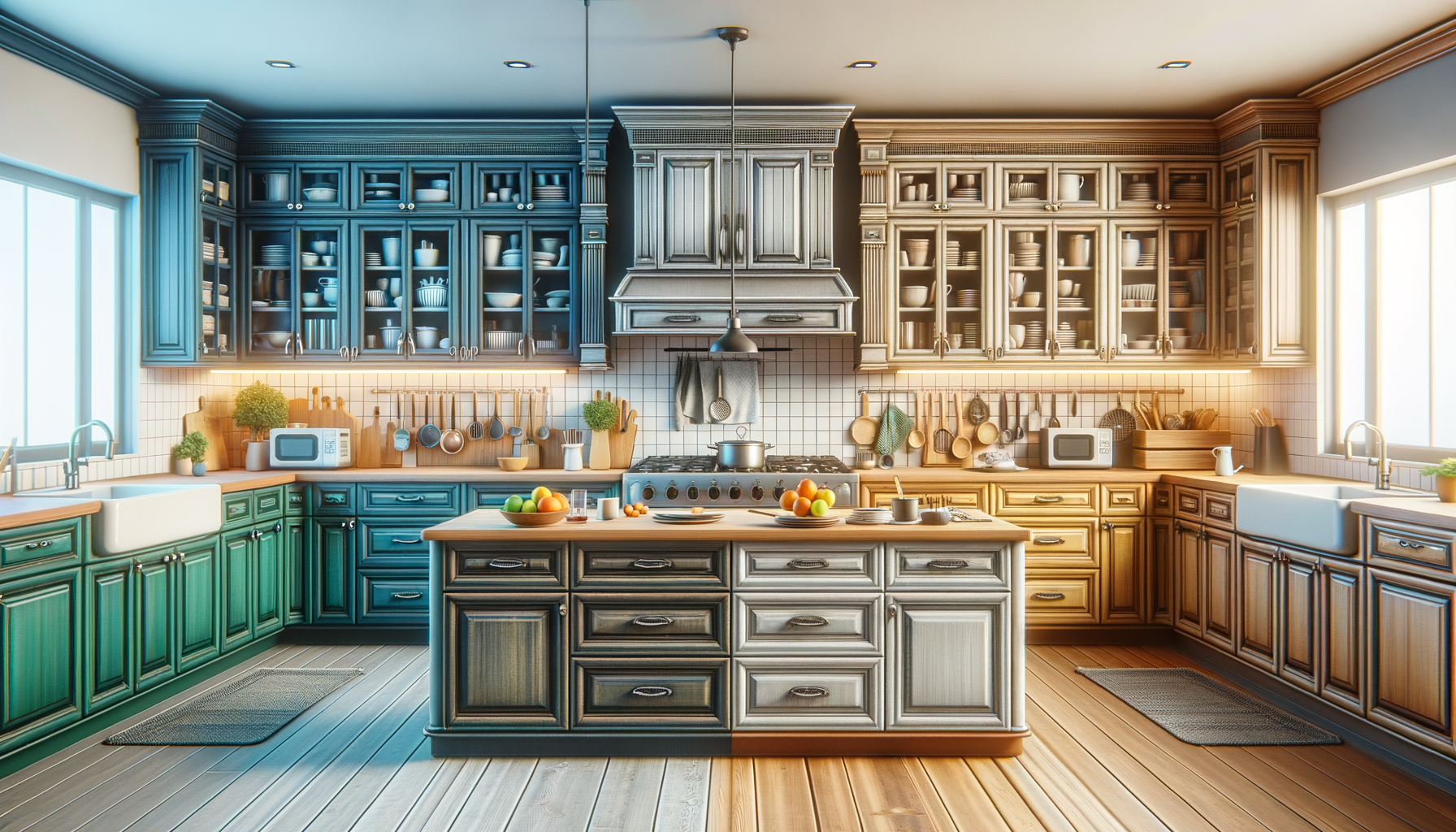
What Kitchen Cabinet Colors Are Fading Out in 2025?
Introduction: The Evolving Palette of Kitchen Cabinets
In the ever-changing world of interior design, kitchen cabinets play a pivotal role in setting the tone and style of the space. As we approach 2025, certain cabinet colors are beginning to fade in popularity, giving way to new trends that capture the essence of modern aesthetics. This article explores the colors that are becoming less common in kitchens, delving into the factors influencing these changes and what it means for homeowners looking to update their spaces.
Neutral Tones: A Shift from Beige to Bold
Neutral tones have long been a staple in kitchen design, offering a versatile and timeless appeal. However, the classic beige and tan shades are gradually losing their dominance. Designers are now leaning towards bolder, more saturated colors that add character and depth to the kitchen environment. While neutrals remain popular, they are being reimagined with richer undertones and complementary hues.
This shift is driven by a desire for more personalized spaces that reflect individual style. Homeowners are increasingly opting for colors like deep blues, forest greens, and even muted reds, which provide a striking contrast to traditional neutral palettes. These colors not only enhance the visual appeal but also create a warm and inviting atmosphere, making the kitchen a focal point of the home.
Key reasons for this transition include the influence of global design trends and the availability of eco-friendly paints that offer a broader range of color options. As sustainability becomes a priority, manufacturers are developing paints that are not only vibrant but also environmentally conscious.
The Decline of All-White Kitchens
For years, all-white kitchens have been synonymous with elegance and cleanliness. However, this trend is gradually waning as more dynamic and colorful designs take center stage. While white kitchens are still appreciated for their bright and airy feel, they are increasingly being perceived as sterile and lacking personality.
Designers are now incorporating contrasting elements such as dark countertops, colorful backsplashes, and wood accents to break the monotony of all-white spaces. This approach not only adds depth and interest but also allows for greater creativity in kitchen design.
The decline of all-white kitchens is partly influenced by the rise of open-concept living, where the kitchen seamlessly integrates with other areas of the home. In such settings, a more cohesive color scheme that extends beyond white can create a harmonious flow throughout the space.
Warm Wood Tones: A Nostalgic Return
Wood tones have always been a classic choice for kitchen cabinets, evoking a sense of warmth and tradition. However, the preference for dark, glossy wood finishes is giving way to lighter, more natural-looking options. This change is fueled by a growing appreciation for organic materials and a desire to bring elements of nature indoors.
Light oak, maple, and ash are among the wood tones gaining popularity, offering a fresh and contemporary take on traditional cabinetry. These finishes are often paired with minimalist hardware and sleek lines, creating a modern yet timeless aesthetic.
The resurgence of warm wood tones is also linked to the broader trend of biophilic design, which emphasizes the connection between nature and interior spaces. By incorporating natural materials and textures, homeowners can create a calming and restorative environment that promotes well-being.
Conclusion: Embracing Change in Kitchen Design
As we look ahead to 2025, it’s clear that kitchen cabinet colors are evolving to reflect changing tastes and lifestyles. While some colors are fading from the spotlight, they are being replaced by exciting new options that offer greater expression and individuality. Whether you’re planning a complete kitchen overhaul or a simple refresh, understanding these trends can help you make informed decisions that align with your personal style and the latest design movements.
Ultimately, the key to a successful kitchen design lies in choosing colors and materials that resonate with you while considering the broader context of your home’s aesthetic. By staying attuned to the latest trends and innovations, you can create a kitchen that is both functional and inspiring.